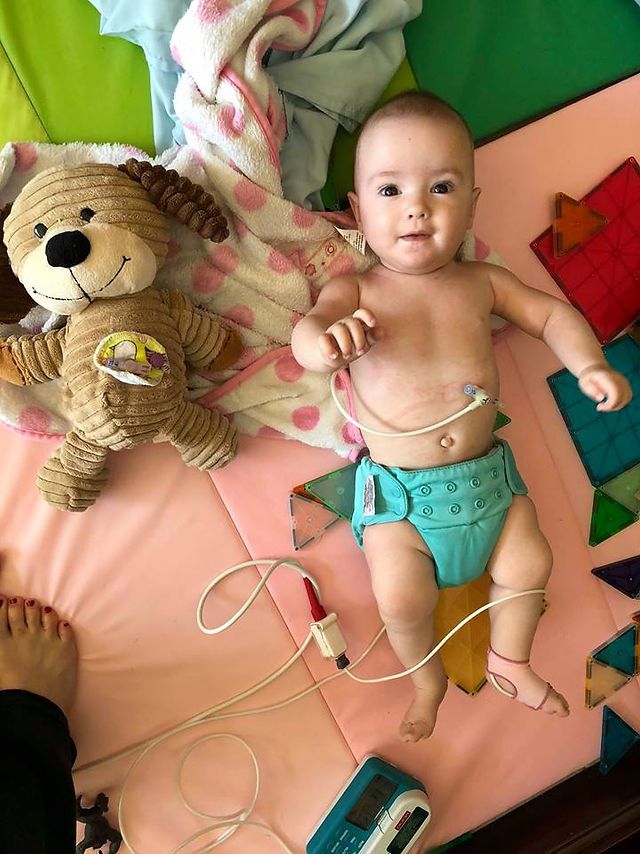
Cloth Diapering in Special Needs Situations
Jennifer Brock, Guest Blogger
Deciding to use cloth diapers can be an easy decision, but once your baby is born, sometimes things don’t always go according to plan. Let me tell you, that doesn’t mean you can’t enjoy cloth diapers still! For me, using cloth diapers was a no brainer. It’s what I used for my older two kids, so having my third I knew we were going to be using them as well. Once Elliot arrived, we went through a whirlwind of obstacles, and cloth came along for our journey. Elliot was born with feeding and airway issues, low tone, and congenital hip dysplasia. She spent 117 days in the NICU, and underwent hip surgery at nine months old. Hopefully MY experience will help others walking down the same or similar paths.
Can I cloth diaper in a NICU/PICU situation?
The answer is typically, Yes! As long as baby is out of an incubator and maintaining their body temp. If they’re allowed to wear clothing then they should be allowed to wear cloth. I would just make sure you ask. I found our NICU to be more than accommodating.
Tips for using cloth in a NICU/PICU situation:
1.) Make sure you talk to your care team about them. If they are weighing diapers, they might require you to have one of the same kind to zero out the scale, or each diaper may need to be weighed before putting it on.
2.) If you trust your nurses to make sure they don’t get misplaced or lost, you can even leave them there and allow for them to use them if they’d like. I know our day-time primary nurse loved when I left cloth for her to use!
3.) It doesn’t have to be all of the time. Even if you only use cloth diapers while you are there it gives their skin a nice break and is a great chance to use those cute diapers!
Can you use cloth diapers if your baby has a feeding tube, ceceostomy, colostomy, or any other type of abdominal procedure?
Of course! If you can use a disposable, you can use cloth. If anything cloth can be really great for clipping tube extensions to it since the elastic in them is much more sturdy than disposables! Just make sure that if your child has a J-tube that you have a really good fit so that it doesn’t rub their tube and move it unnecessarily.
What about in a Spica/Full body cast?
We found that using cloth full time in a typical Spica cast wasn’t the best option. Because of the pressure from the cast, compression leaks were a major concern, and the cloth diaper needed to be changed constantly in order to keep the cast dry. We had more success using cloth with the Spica during the day, but only if the diaper was changed immediately. At night it wasn’t going to work without major leaks. For us, it wasn’t worth it. It might be better with the waterproof Spica - but we haven’t had a chance to try that yet.
However, your cloth stash can absolutely come in handy if your child ends up in a Spica for any number of reasons:
- Using fleece liners over a disposable/pad helps wick away moisture.
- Using a thin absorbent insert over the disposable/pad helps catch any leaks that may occur.
- Using a cover over everything helps immensely. It provides a cost savings from having to buy bigger than needed disposables, a cute factor, and having an PUL on the outside helps from any stubborn leaks that can happen.
Can you use cloth on your child going into surgery?
Absolutely! They may want you to change them beforehand so they are nice and fresh. But we’ve never had problems with our children’s hospital! Communication with your team is key!
The bottom line: there’s almost always a way to make cloth diapers work, even when things don’t go as expected. It’s always okay to do what works best for your family, and if that is disposables, that’s fine! We were an experienced and committed cloth diapering family, and wanted to use cloth as much as we could, and it worked for us!
Jennifer Brock is a military mom of three and an admin of the group Fluff Love & CD Science. Her previous cloth adventures include using cloth diapers while stationed in Korea.
